CAR
The Science Behind Car Paint: What Makes It Durable
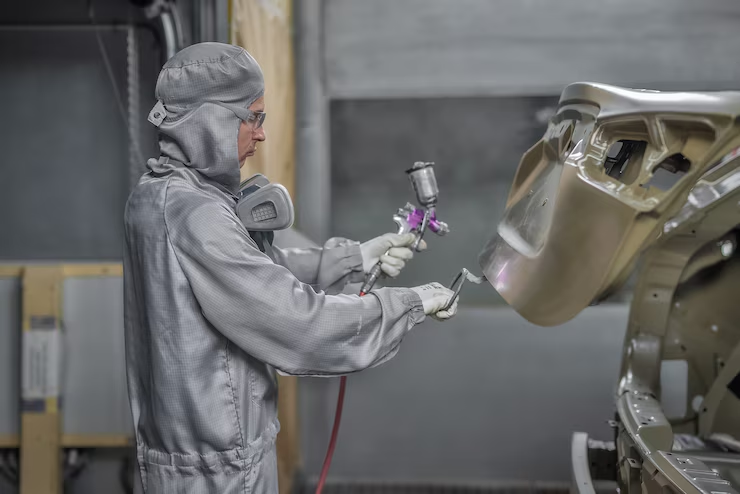
For car enthusiasts, a vehicle is more than just a mode of transportation; it’s a passion, a piece of art, and often a significant investment. One of the most important aspects of maintaining the aesthetic and value of a car is its paint job. Durable car paint not only enhances the vehicle’s appearance but also protects it from environmental damage.
In this post, we’ll delve into the science behind what makes car paint durable, examining everything from its chemical composition to the latest technological innovations.
The Basics of Car Paint
Car paint serves several key functions beyond just providing color. Here’s a breakdown of the types of car paint and their primary roles:
- Primer: The base layer that prepares the surface for paint and helps it adhere better.
- Base Coat: This is the layer that contains the color pigments and is what you see when you look at the car.
- Clear Coat: A transparent layer that provides a glossy finish and protects the underlying paint from UV rays, scratches, and environmental elements.
Different types of car paints include:
- Acrylic Lacquer: Known for its high gloss but less durable.
- Acrylic Enamel: More durable than lacquer and provides a hard shell.
- Urethane: Offers excellent durability and resistance to environmental factors.
Factors That Affect Durability
Several environmental factors can affect the durability of car paint:
- UV Rays: Ultraviolet radiation from the sun can break down the chemical bonds in paint, leading to fading and oxidation.
- Moisture: Water, especially when combined with pollutants, can cause paint to deteriorate over time.
- Temperature Fluctuations: Extreme changes in temperature can cause the paint to expand and contract, leading to cracks.
- Pollutants and Contaminants: Road salt, bird droppings, and tree sap can all cause chemical reactions that degrade paint.
- Physical Damage: Stones, scratches, and other physical impacts can chip away at the paint, exposing the metal underneath to rust and corrosion.
The Science Behind Durable Paint
The durability of car paint is largely determined by its chemical composition:
- Resins: Provide the paint’s adhesive properties and flexibility.
- Pigments: Offer color and also some level of protection against UV rays.
- Solvents: Help in the application process but evaporate as the paint dries.
- Additives: Enhance various properties like UV resistance, scratch resistance, and gloss.
High-Durability Paints
- Nano-Ceramic Coatings: These use nanotechnology to create a hard, transparent layer that offers superior protection against environmental elements.
- Self-Healing Paints: Incorporate polymers that can “heal” minor scratches and swirls when exposed to heat.
Innovations in Car Paint Technology
The field of car paint technology is continually evolving. Some of the latest advancements include:
- Hydrophobic Coatings: These repel water and dirt, making it easier to keep the car clean.
- Graphene-based coatings: These offer extreme durability and are more resistant to environmental factors compared to traditional coatings.
- Electrochromic Paints: Change color based on electrical input, allowing for customizable appearances.
Maintenance Tips to Preserve Car Paint
To ensure your car’s paint remains in top condition, consider the following maintenance tips:
- Regular Washing: Use a pH-balanced car shampoo from Auto Detailing like those famous in Fairfax to remove contaminants without damaging the paint.
- Waxing: Apply a high-quality car wax every few months to add an extra layer of protection.
- Use Protective Covers: When parking for extended periods, especially outdoors, use a car cover to shield against UV rays and contaminants.
- Avoid Harsh Chemicals: When cleaning your car, avoid using harsh chemicals that can strip away the clear coat and damage the paint.
- Repair Chips and Scratches Promptly: Address any chips or scratches immediately to prevent rust and further damage.
Conclusion
Understanding the science behind car paint durability allows car enthusiasts to make informed decisions about caring for their vehicles. From the chemical composition of the paint to the latest technological innovations, several factors contribute to making car paint durable. By following proper maintenance tips, you can preserve the beauty and longevity of your car’s paint job.
CAR
Top Benefits of Auto Towel Seat Covers for Your Vehicle
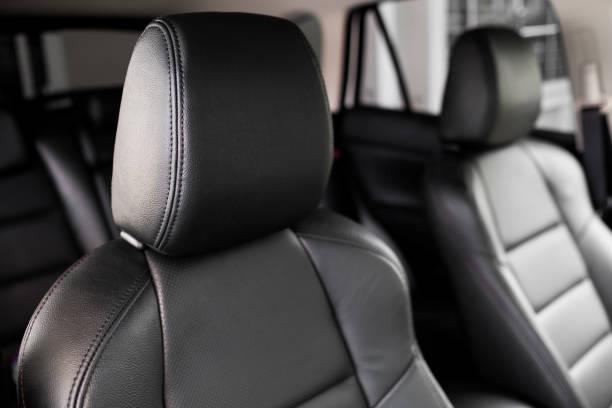
Introduction
Auto towel seat covers are a versatile and practical option for car owners who want to protect their vehicle seats while also adding comfort and style. Unlike other materials, towel seat covers offer unique benefits that make them particularly appealing. These covers are designed to fit over your car seats to protect them from spills, dirt, and damage.
Why Choose Towel Seat Covers for Your Car?
Towel seat covers are a favorite among car owners for several reasons:
Material Benefits:
- These covers are made from absorbent materials, which can effectively manage moisture and spills. This makes them ideal for use after sports activities or beach trips.
- Towel car seat covers are easy to put on and take off, which means you can wash and reuse them effortlessly. This flexibility is unmatched by many other types of seat covers.
- These covers are generally more affordable than their leather or fabric counterparts while being available in a range of styles and colors to match personal tastes.
For additional insights on auto towel seat cover materials, visit a poll on Reddit.
Protection for Your Car Seats:
Auto towel seat covers are not only stylish, but they also serve an essential function, protecting your car seats from damage. Let’s explore how these covers can be your vehicle’s best friend.
- Guard Against Spills and Stains: Everyday mishaps like coffee spills or crumbs from snacks can leave lasting marks on your seats. Auto towel seat covers act as a barrier, keeping your original car seats clean and safe from permanent stains.
- Prevent Wear and Tear: Over time, regular use can lead to wearing out the original fabric or leather of your car seats. A car seat towel cover helps preserve the integrity of your seats by providing an extra layer of protection.
- Cost Savings: By using car seat towel covers, you protect your seats from wear and accidental damage, potentially saving on costly repairs or replacements. Keeping your car seats in good condition can also maintain or even boost your vehicle’s resale value.
Comfort and Convenience of Car Seat Cover Towels
Car seat cover towels offer more than just protection; they enhance your driving experience by adding comfort and convenience.
- Breathability and Softness: One key advantage of towel seat covers is their breathability. They allow air to circulate, preventing that sticky feeling you often get with other materials, especially during hot weather. Plus, the softness adds an extra comfort layer on long drives.
- Easy Maintenance: The cleaning is a breeze with car seat cover towels. Most are machine washable, making it easy to keep them fresh and clean without much fuss. Simply remove them, toss them in the washer, and they’re ready to go again.
Auto towel seat covers bring a combination of protection, comfort, and ease to your driving experience. Whether you’re aiming to extend the life of your car’s interior or simply looking for a cost-effective way to enhance comfort, these covers are a smart choice.
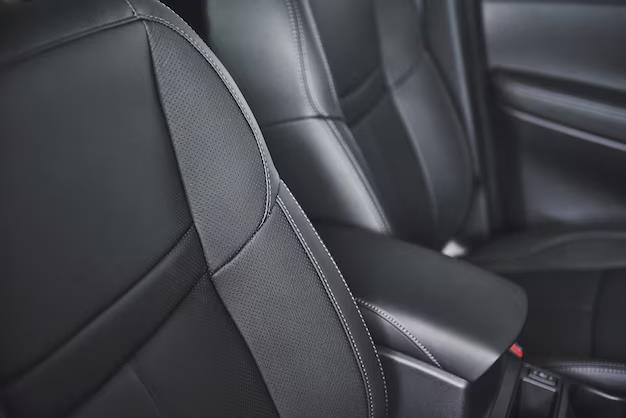
Enhancing Style with Auto Seat Towels
Auto seat towels are not just practical, they can also breathe new life into your vehicle’s interior. Here’s how towel car seat covers can enhance the style of your car:
- Variety of Colors and Designs: Auto seat towels come in a wide range of hues and patterns that can match the personality and preferences of any car owner. Whether you prefer bold, bright colors or subtle, muted tones, there’s a design for you.
- Customizable Look: By choosing designs that suit your taste, these covers can help personalize your vehicle. They offer an easy way to change the look of a car without a permanent commitment.
- Easy to Update: If you want to refresh your interior’s style periodically, swapping out auto seat towels can be a simple solution. This adaptability can help keep your vehicle looking updated with current design trends.
Having stylish seat covers can make your driving experience more enjoyable. For high-quality auto towel seat cover selections, consider visiting a reputable brand.
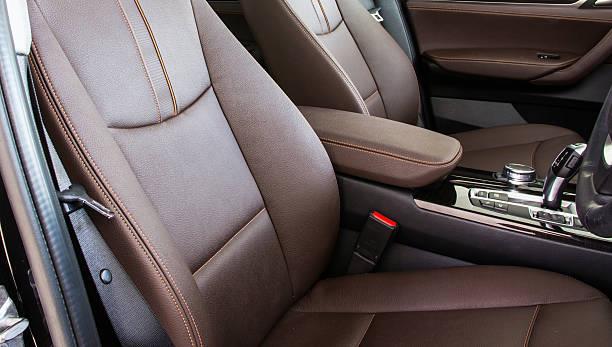
Easy Installation and Versatility
One of the key advantages of towel seat covers is their user-friendly installation and versatility. Here’s what makes them stand out:
- Effortless Installation: Installing towel seat covers is a breeze. They slip on easily over your seats, requiring no special tools or expertise. This feature makes them perfect for busy individuals who need quick solutions.
- Quick Removal: Just as easy to take off, these covers facilitate cleaning and washing without a hassle. You can remove them and wash whenever necessary, keeping your car interior fresh.
- Compatibility with Various Vehicles: Towel seat covers are versatile, designed to fit different types of vehicles from sedans to SUVs. This flexibility ensures they’re a valuable accessory for any type of car owner.
- Versatile Use: These covers can be switched between different cars or even used to protect seats during specific activities (like beach outings or after workouts), adding to their utility.
With their stylish designs and straightforward usability, auto towel seat covers are a smart choice for any vehicle owner looking to enhance both style and functionality.
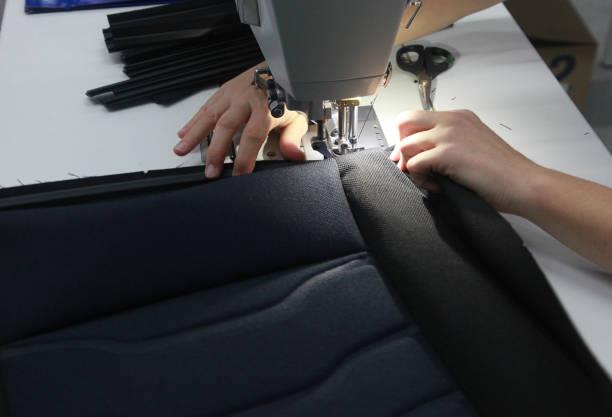
Affordable Car Seat Protection
Choosing towel seat covers offers a budget-friendly solution for protecting your vehicle’s interior. These covers are often more cost-effective compared to other materials, providing great value for money. Here’s why towel car seat covers are a smart choice for cost-conscious drivers:
- Cost-effective Purchase: Towel seat covers are generally less expensive than leather or other premium materials, making them an affordable option.
- Durability: While budget-friendly, these covers are durable and can withstand regular use, providing lasting protection for your seats.
- Savings on Maintenance: By safeguarding the original upholstery, towel seat covers can save you from costly repairs and replacements in the long run.
For additional guidance on auto towel seat covers, check out this helpful guide.
Maintaining Your Auto Towel Seat Covers for Longevity
Proper maintenance of your car seat towel covers ensures they stay in top condition and extend their lifespan. Here are some practical tips to maintain them effectively:
- Regular Cleaning: Wash your towel seat covers routinely to keep them fresh and free from stains.
- Cleaning Methods:
- Hand Wash: Use mild detergent and warm water for a gentle clean, which helps preserve the fabric.
- Machine Wash: If machine washing is recommended, use a gentle cycle setting.
- Air Dry: Always let your covers air dry to prevent shrinkage or damage from heat.
- Avoiding Excessive Sun Exposure: Prolonged sun exposure can fade the material, so it’s advisable to park in shaded areas where possible.
- Inspect Regularly: Periodically check the covers for any wear or tear, and address minor issues promptly.
By following these maintenance practices, you can keep your auto towel seat covers in excellent condition for years to come.
Note: This article adheres to Google’s content guidelines and incorporates external resources and studies to support the provided information.
CAR
Hit by an Uninsured Driver in California?
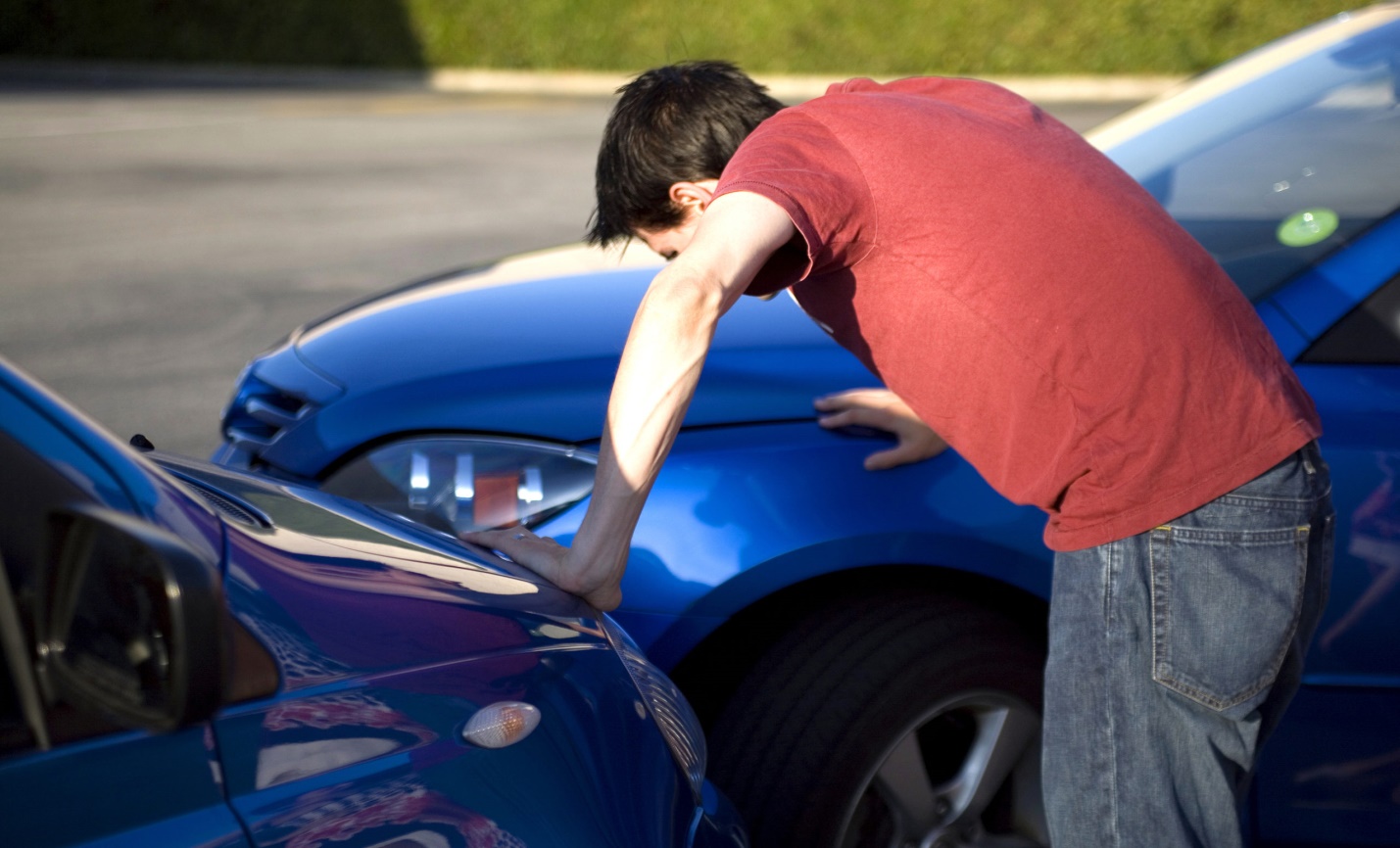
Getting into a car accident is stressful enough, but when the at-fault driver is uninsured, the situation becomes even more challenging. In California, where car insurance is mandatory, thousands of drivers still operate their vehicles without proper coverage. If you’ve been hit by an uninsured driver, you might feel overwhelmed about how to cover medical bills, vehicle repairs, and other expenses. The good news is there are options available to help you recover compensation. This article will guide you through the steps to take, your legal rights, and how a Canoga Park Car Accident Lawyer can assist you in navigating this complex situation.
Understanding Uninsured Drivers in California
Despite California’s strict laws requiring all drivers to carry liability insurance, many still drive without it. In fact, it’s estimated that nearly one in six drivers in California are uninsured. If one of these uninsured drivers causes an accident, recovering damages can become complicated because they lack the insurance to cover your losses.
Steps to Take After Being Hit by an Uninsured Driver
When involved in an accident with an uninsured driver, it’s crucial to take specific steps to protect yourself and strengthen your case. Here’s what you should do:
- Ensure Safety and Call 911
- Move to a safe location, if possible, and check for injuries.
- Call 911 to report the accident. A police report is essential, especially when dealing with an uninsured driver, as it serves as a key piece of evidence.
- Collect the Driver’s Information
- Even if the other driver doesn’t have insurance, gather their contact details, driver’s license number, and vehicle information.
- Document the Scene
- Take photos of the accident scene, your vehicle, and any visible injuries.
- Collect contact information from witnesses who can support your version of events.
- Notify Your Insurance Company
- Report the accident to your insurance company promptly. They may be able to assist you in covering your damages through your policy.
Insurance Options for Recovering Compensation
When the at-fault driver is uninsured, your ability to recover damages will often depend on your own insurance policy. Here are some key types of coverage that can help:
- Uninsured Motorist (UM) Coverage
Uninsured motorist coverage is designed specifically for accidents involving uninsured drivers. If you’ve added this optional coverage to your policy, it will cover medical expenses, lost wages, and other damages caused by the uninsured driver.
- Collision Coverage
Collision insurance covers the cost of repairing your vehicle, regardless of who caused the accident. However, this coverage may require you to pay a deductible.
- Medical Payments (MedPay) Coverage
MedPay can help pay for medical bills for you and your passengers, regardless of fault. It’s a valuable add-on in situations involving uninsured drivers.
Can You Sue an Uninsured Driver?
Yes, you can sue an uninsured driver for damages, but there’s a catch: many uninsured drivers don’t have the financial resources to pay for your losses, even if you win the case. This is why pursuing compensation through your own insurance policy is often the most practical solution.
However, if the uninsured driver has assets or other financial means, a lawsuit could be worth pursuing. A Canoga Park Car Accident Lawyer can evaluate your case and advise you on the best course of action.
How a Canoga Park Car Accident Lawyer Can Help
Dealing with an uninsured driver case can be legally and emotionally exhausting. Hiring a qualified Canoga Park Car Accident Lawyer can make a significant difference in the outcome of your case. Here’s how they can assist:
- Investigating the Accident
Your lawyer will gather evidence, review the police report, and build a strong case to prove liability.
- Navigating Insurance Claims
Insurance companies may try to minimize your payout, but a skilled attorney will negotiate on your behalf to ensure you receive fair compensation.
- Exploring Legal Avenues
If insurance doesn’t cover your losses, a lawyer can help you file a lawsuit against the uninsured driver or identify other potential sources of compensation.
- Maximizing Your Compensation
An experienced lawyer will ensure that all your damages—medical bills, lost wages, pain and suffering—are included in your claim.
Types of Compensation You May Be Entitled To
Even if the at-fault driver doesn’t have insurance, you may still be eligible to recover compensation through other avenues. Common damages include:
- Medical Bills: Current and future medical expenses related to your injuries.
- Vehicle Repairs: Costs to repair or replace your vehicle.
- Lost Wages: Compensation for time missed from work due to your injuries.
- Pain and Suffering: Non-economic damages for the physical and emotional toll of the accident.
Preventive Measures: Protecting Yourself in the Future
To safeguard yourself from financial losses caused by uninsured drivers, consider these tips:
- Add Uninsured Motorist Coverage to Your Policy: This coverage is invaluable in situations where the at-fault driver lacks insurance.
- Maintain Adequate Insurance Coverage: Ensure you have collision and MedPay coverage as part of your policy.
- Drive Defensively: Avoid accidents by staying alert and following traffic laws.
Conclusion
Being hit by an uninsured driver in California can be a frustrating and financially draining experience, but it’s not the end of the road. By taking the proper steps after the accident and understanding your insurance options, you can still recover compensation for your losses. Working with a trusted Canoga Park Car Accident Lawyer will provide the guidance and support you need to navigate this complex situation and maximize your chances of a favorable outcome.
CAR
The Perfect Recipe for a buzzfeed quiz party: Food, Friends, and Fun!

Buzzfeed quiz party quizzes have taken the internet by storm, turning casual scrolling into a delightful journey of self-discovery. Remember that time you found out which potato chip flavor matched your personality? Or when you discovered your secret celebrity doppelgänger? These quirky quizzes are not just fun; they create connections and spark conversations that linger long after the results pop up on your screen.
Now imagine bringing this buzzworthy experience to life with a BuzzFeed quiz party! Picture laughter echoing off the walls, friends gathering around, snacks within reach, and anticipation hanging in the air as everyone waits for their turn to unveil their inner selves through these lighthearted challenges. It’s more than just entertainment; it’s an opportunity to bond over shared laughs and surprising revelations. So grab your friends, prepare some tasty treats, and let’s dive into how to host the ultimate BuzzFeed quiz party!
Setting the scene: Creating a fun and inviting atmosphere for your quiz party
Setting the right vibe for your buzzfeed quiz party is essential. Start with cozy lighting. String fairy lights or use candles to create a warm ambiance that feels inviting.
Next, think about your seating arrangements. Gather comfy cushions and chairs to keep everyone relaxed during the fun. A casual setup encourages conversation and laughter.
Add some playful decorations related to quizzes or pop culture. Think posters of iconic TV shows or movie quotes that spark nostalgia among guests.
Creating a playlist can elevate the energy in the room too. Choose upbeat tracks that get people moving while they mingle before diving into the quizzes.
Don’t forget little personal touches like name tags or quirky trivia facts scattered around as icebreakers when guests arrive. These details help set an engaging tone right from the start!
Food and drinks: Easy, budget-friendly options to keep your guests happy and energized
For a successful buzzfeed quiz party, food and drinks play a crucial role. Keep it simple with finger foods that are easy to grab between rounds. Think sliders, vegetable platters, or mini tacos. These bites allow everyone to munch without missing a question.
Don’t forget about dips! Guacamole, salsa, and hummus served with chips or pita can be crowd-pleasers. They’re not only delicious but also budget-friendly.
When it comes to drinks, consider creating a DIY mocktail bar. Offer juices like lemon-lime soda mixed with fruit garnishes for refreshing refreshments. Sparkling water is another great option to keep guests hydrated and energized.
If you want something sweet as well, popcorn in various flavors adds an exciting crunch and satisfies those snack cravings while keeping the atmosphere lively. Your guests will appreciate the thoughtfulness behind each tasty offering!
Choosing the right quizzes: Tips for selecting buzzfeed quizzes that will appeal to all of your guests
Selecting the right quizzes is crucial for a successful buzzfeed quiz party. Start by considering your guests’ interests. Think about what they enjoy—pop culture, travel, food, or personality tests.
Mix it up! Choose a variety of topics to keep everyone engaged. A well-rounded selection ensures there’s something for everyone at the table.
Pay attention to difficulty levels too. Opt for some lighthearted and fun quizzes alongside ones that provoke thought or spark debate. This balance keeps energy high throughout the event.
Don’t forget current trends! Quizzes based on recent movies, shows, or events can create excitement and conversation among your friends.
Consider inclusivity when choosing quizzes. Aim for questions that are relatable and avoid niche subjects that only a few may know about. Your goal is laughter and connection through shared experiences.
Playing the game: Helpful suggestions for how to structure and run your quiz party
To kick off your buzzfeed quiz party, set a relaxed vibe. Gather everyone around a central space where they can easily see and hear each other.
Consider starting with an icebreaker quiz to warm up the group. This helps guests loosen up and get into the spirit of fun.
As you dive into the quizzes, keep track of points using simple scorecards or a whiteboard. This adds a competitive edge without overwhelming anyone.
Rotate who gets to read out questions; it keeps engagement high and allows everyone to shine in their unique way.
Don’t forget breaks! Allow time for laughter, snacks, and casual chats between rounds. It’s about bonding as much as quizzing.
Encourage friendly banter during gameplay but establish some ground rules to maintain order and ensure that everyone’s having a good time together.
Conclusion:
Hosting a buzzfeed quiz party is all about connection. The laughter and friendly competition create unforgettable memories.
Your guests will feel appreciated when you tailor the experience to their tastes. Personal touches make everything special, from food choices to quiz selections.
Encouraging engagement among friends can spark new conversations and inside jokes that last long after the night ends.
Remember, it’s not just about answering questions; it’s about enjoying each other’s company in a light-hearted environment.
So grab those quizzes, prepare some snacks, and let the fun begin!
FAQ’s
When planning the ultimate buzzfeed quiz party, it’s natural to have a few questions. Here are some common ones to help you navigate your event seamlessly.
What type of quizzes should I choose?
Consider your guests’ interests. Select a mix of personality, trivia, and fun challenges that cater to different tastes. This way, everyone can find something they enjoy.
How many quizzes should we do?
Three to five quizzes is usually a good number for an evening filled with laughter and engagement without overwhelming anyone. Keep it light-hearted!
Can we add prizes?
Absolutely! Small prizes or simple tokens like homemade cookies or cute trinkets can motivate friendly competition among guests.
-

 GENERAL1 year ago
GENERAL1 year agoDiscovering the Artistic Brilliance of Derpixon: A Deep Dive into their Animation and Illustration
-

 Posts1 year ago
Posts1 year agoSiegel, Cooper & Co.
-

 Lifestyle1 year ago
Lifestyle1 year agoPurenudism.com: Unveiling the Beauty of Naturist Lifestyle
-

 Lifestyle1 year ago
Lifestyle1 year agoBaddieHub: Unleashing Confidence and Style in the Ultimate Gathering Spot for the Baddie Lifestyle
-

 HEALTH1 year ago
HEALTH1 year agoTransformative Health Solutions: Unveiling the Breakthroughs of 10x Health
-

 Entertainment1 year ago
Entertainment1 year agoKhatrimaza Unveiled: Exploring Cinematic Marvels and Entertainment Extravaganza
-

 Entertainment1 year ago
Entertainment1 year agoGeekzilla Podcast: Navigating the World of Pop Culture, Gaming, and Tech
-

 BUSINESS1 year ago
BUSINESS1 year agoUnlocking the Secrets to Jacqueline Tortorice Remarkable Career and Accomplishments
